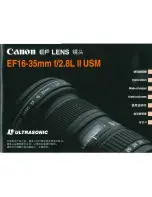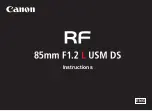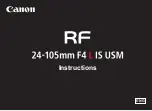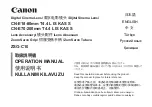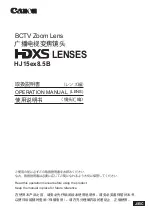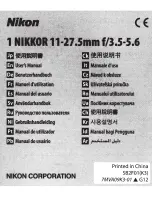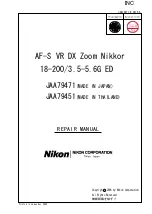
Telec
en
tr
ic L
enses
108
http://machinevision.navitar.com
• email: [email protected]
Telecentricity FAQ’s
What is Telecentricity?
Telecentricity is a distinctive property of certain multi-element lens designs in which the chief rays
(the rays through the center of the entrance or exit pupil), for all points across the object or image, are parallel
to the optical axis.
Now, what is Telecentricity in English?
Telecentricity is all a matter of perspective distortion, which
is a variation in magnification with distance. A railroad track
that shrinks, or a tall building that gets narrower with height,
are both everyday examples of this. Hold one thumb close to
the eye and the other at arms length. One looks smaller than
the other - your brain knows that’s not so, however, a vision
system doesn’t. The telecentric lens makes all objects, within
the “depth of field” of the lens, appear to be equidistant from
the lens, thereby eliminating the variation in magnification
with distance (see diagram at right).
What are the benefits of using a Telecentric Lens?
Telecentric lenses provide constant image magnification as
object distance varies - virtually eliminating perspective angle
error. With a telecentric lens, objects inside deep holes are vis-
ible throughout the field, undistorted, therefore, these lenses
are extremely useful for inspecting three-dimensional objects
or scenes where image size and shape accuracy are critical.
Do I need special illumination with a Telecentric lens?
Yes, if you want to derive the full benefit of telecentricity. Both incident and transmitted illumination should
meet certain collimation criteria.
How is the degree of telecentricity determined?
The degree of telecentricity is measured by the chief ray angle in the corner of the field. Telecentric lenses
have chief ray angles of less than 0.5 degrees - some even have less than 0.1 degree. In comparison, a standard
commercial lens may have chief ray angles of 10 degrees or more.
Will using a Telecentric lens improve my depth of field?
No, telecentricity will keep the magnification constant through the depth of field. However, the focus will
soften as with any lens. The depth of field will still be determined by the system’s F/#.
Are Telecentric lenses available with Zoom features?
Yes, Navitar’s 12X Telecentric Zoom system allows users to reach a true telecentric condition to within less
than 0.3 degrees while maintaining constant perspective and magnification. The 12X Telecentric Zoom pro-
vides field coverage from 50 mm down to 4 mm and with coaxial illumination, allows clear viewing, even
when working with mirror-like surfaces.
What is the difference between a Double-Sided Telecentric lens and a standard Telecentric Lens?
Double-Sided Telecentric lenses provide both image and object side telecentricity. With the single telecentric
lens, the rays at the image plane are still coming in at strong angles. If we “double up” on the lenses, we now
have telecentric performance front and back. The resulting system is less prone to optical aberrations and geo-
metrical distortions. Image size will not vary across the field due to positioning of the sensor.
Modern sensor pixels are both getting smaller and more cluttered up with electronic circuitry. As light collec-
tion is normally a function of active area, manufacturers are adding micro lenses over each pixel to aid in the
collection of light. These micro lenses are most effective when the incoming rays are 5 degrees, or less, off
normal. The telecentric cone of light is a major benefit in these situations.
Conventional
Lens
Telecentric
Lens
















